Meet the Flute Soloist | Kelly Sulick

Kelly Sulick currently teaches at the University of Virginia and at Longwood University, and serves as Principal Flute in the Charlottesville Symphony. Prior to her appointment, she served as Principal Flute with the Evansville Philharmonic Orchestra and as Consortium Instructor of Flute at the University of Evansville. She earned her Doctorate of Musical Arts from the Peabody Conservatory, her Master of Music degree in Flute Performance from the University of Southern California, and a Bachelor of Music degree in Flute Performance and a Bachelor of Arts degree in English Language and Literature from the University of Michigan, where she graduated with highest honors and was named a James B. Angell Scholar for her academic achievements.
Hailed as “flawless” by the Evansville Courier Press for a concerto performance with the Evansville Philharmonic Orchestra, Kelly has also appeared as a concerto soloist with ensembles throughout the country, including the Southern Illinois Music Festival Orchestra, the Charlottesville Symphony, and most recently the Ann Arbor Symphony Orchestra and alongside Sir James Galway at the Kennedy Center
A champion of new music, she has commissioned and recorded dozens of works for solo flute and flute with electronics, and has premiered several additional works for solo flute and chamber ensemble. She has performed at the SEAMUS National Conference, the Atlas INTERSECTIONS festival, the TomTom Founders Festival, the Technosonics Festival, and the Minimalist Jukebox series, a music festival curated by John Adams. She has worked with such notable composers as Leslie Bassett, William Bolcom, Matthew Burtner, Evan Chambers, Michael Daugherty, Karel Husa, Daniel Kessner, Lowell Liebermann, Judith Shatin, and Frank Ticheli, among others. An avid chamber musician, she is the co-founder of .thrum, a new music collective, and is a member of the EcoSono Ensemble, an eco-acoustic cohort that explores connections between music, technology, and environmental activism.
Kelly won second place in the 2010 National Flute Association's Young Artist Competition, and was awarded the prize for the best performance of Kristin P. Kuster's "Perpetual Afternoon." She can be heard on several compact discs, including William Bolcom's “Songs of Innocence and of Experience” under Leonard Slatkin, a Naxos release that received four Grammy awards including Best Classical Album. Her album Duo with pianist John Mayhood, which features twentieth- and twenty-first century American works for flute and piano, was released on Centaur Records in 2022. Additional recordings are also available on the Equilibrium, Other Minds, and Ravello Records labels. Her principal teachers include Marina Piccinini, Amy Porter, and Jim Walker.
6 | CHARLOTTESVILLE SYMPHONY at the University of Virginia
Photo: Jen Fariello

2022-23 SEASON | 7 Soulful Mediterranean Food & Wine Dinner Nightly 4 - 9 pm Full Service Catering Patio & Private Event Space Free Parking 434-975-6796 416 West Main Street Charlottesville, VA www.orzokitchen.com Follow us! @orzokitchen
featuring Benjamin Hunter, fiddle

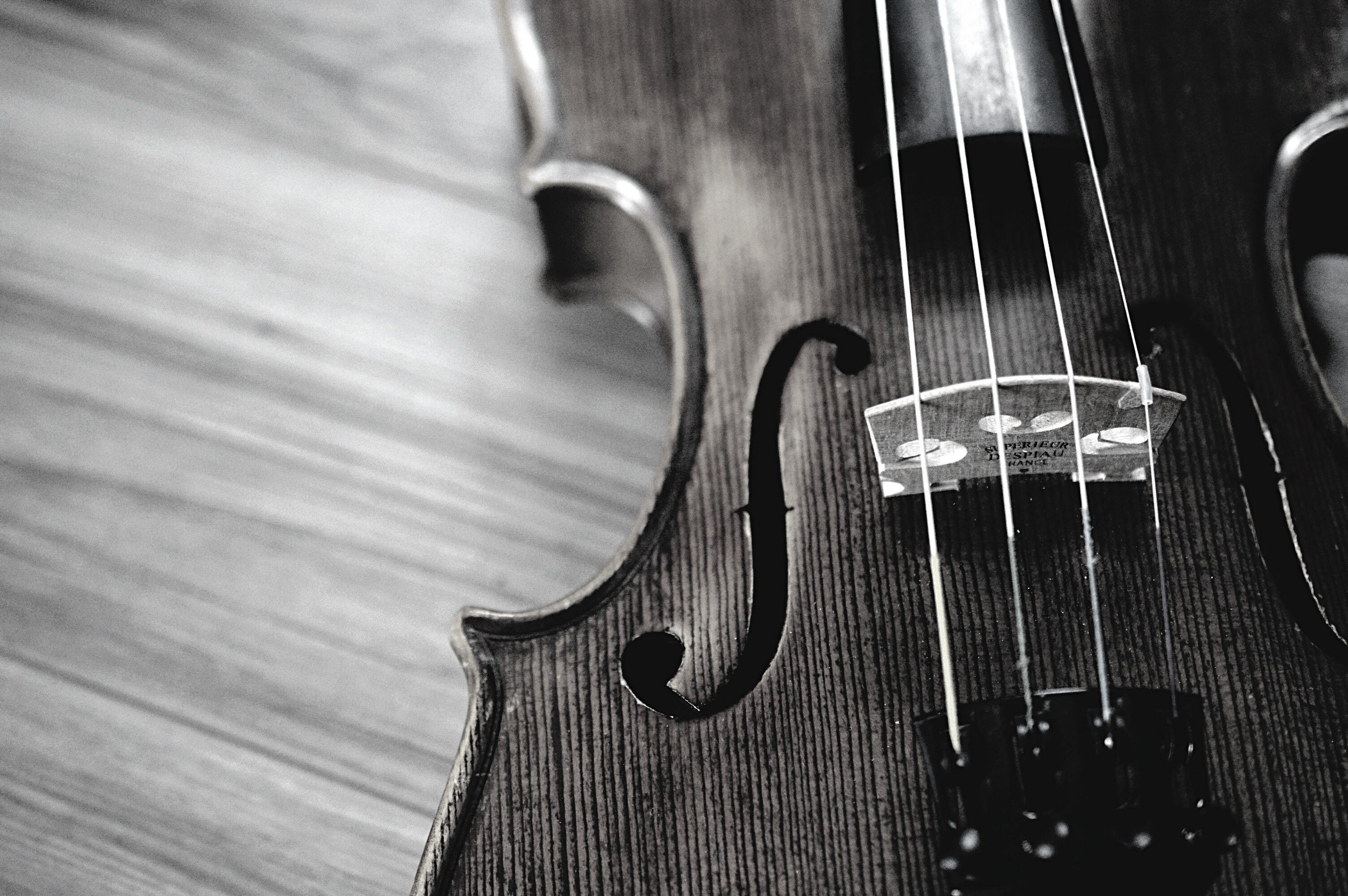
Monday,
Monday, February 13 at 7:30pm Blackfriars Playhouse, Staunton


Tuesday, February 14 at 7:30pm
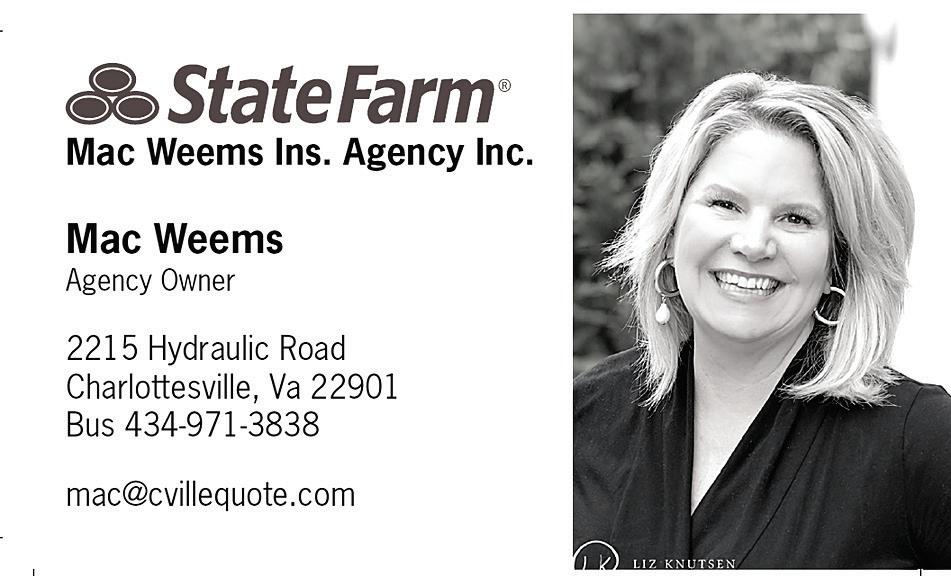
Tuesday, February 14 at 7:30pm Church of Our Saviour Stone Chapel, Charlottesville
Tickets available online and at the door www.earlymusiccville.org
8 | CHARLOTTESVILLE SYMPHONY at the University of Virginia
MUSIC ACCESS PROJECT ngs s r
EARLY
February 13 at 7:30pm Playhouse, Staunton
Mac Weems, Agency Owner mac@cvillequote.com 2215 Hydraulic Road Charlottesville, VA 22901-2705 (434) 971-3838 Our service and rates will be music to your ears. EARLY MUSIC ACCESS PROJECT presents Winter Songs & Stories
with storyteller Sarah Walker
EARLY MUSIC ACCESS PROJECT presents ROCK & REEL
Folk Traditions
Monticello’s
JUNE 18, 2023
soon! www.earlymusiccville.org
Sheila Arnold, storyteller SUNDAY,
Venue announcement coming
CHARLOTTESVILLE SYMPHONY at the University of Virginia
BENJAMIN ROUS, Music Director
KATE TAMARKIN, Music Director Laureate
VIOLIN I
Daniel Sender, Concertmaster
Mary Dean Scott Chair
Megan Yi
Charles Burton
Barbara Uzun
Amina Sibay
Kailash Patel
Julian Lee
Justin Esposito
VIOLIN II
Ting-Ting Yen, Guest Principal
Robert D. Cross Memorial Chair
Sion Kim
Benjamin Kurland
Isabella Li
Margaret Lather
Chloe Ross
Steven Meyer
VIOLA
Ayn Balija, Principal
Elizabeth W. Gatewood Chair
Sydney Anderson
Yosef Chang
Bethany Gaubatz
Grace Webb
Justin Park
Elisabeth Thomas
CELLO
Adam Carter, Principal
Genevieve B. Horween and Marion H. Chase Chair
Christopher Fox
Mark Dennison
Julian Bowes
Lynn Park
Maggie Weber
David Chen
BASS
Peter Spaar, Principal
Robert and Ruth Cross Chair
Andrea Tache Lopez
Masashi Kawasaki
Richard Karpynskyi
Dhruv Rungta
FLUTE
Angela Kelly, Guest Principal
Thomas C. and Margaret M. MacAvoy Chair
Sky Chen
Elizabeth Mayhood
Julia Totten
PICCOLO
Elizabeth Mayhood
Julia Totten
OBOE
Kelly Peral, Principal
Jason I. and Ellen U. Eckford Chair
Dean Nyberg
Garrett Arosemena Ott
ENGLISH HORN
Garrett Arosemena Ott
CLARINET
Jiyeon Choi, Principal
Henry Jacob Javor Chair
Rick Kessel
Elizabeth Ozment
BASSOON
Elizabeth Roberts, Principal
Ann Saunders Roberts Chair
Chris Cheng
Zoe Edelman
Jerry Su
CONTRABASSOON
Zoe Edelman
HORN
Cody Halquist, Principal
Johanna and Derwood
Chase & Chase Investment
Counsel Corp. Chair
Allison Lyttle
Thomas Skacel
Daniel Fisher
TRUMPET
Maximillian McNutt, Principal
Dr. and Mrs. Kennerly H. Digges Chair
Charles Laughlin
Adam Stievater
TROMBONE
Nathaniel Lee, Principal
Rawson-Jones Chair
Srikar Chittari
Henry Hesford
TUBA
Jess Lightner, Principal
Christine M. and Robert L. Elliott Chair
TYMPANI AND PERCUSSION
I-Jen Fang, Principal
James E. and Yolonda T. Roberts Chair
Jack Engel
Jacob Lovelace
Christian Ortolf
Roman Ramirez
Ilon Weeldreyer
HARP
Anastasia Jellison, Principal Jefferson Trust Chair
With the exception of the Principals, string players in each section rotate stands on a regular basis.
2022-23 SEASON | 9
CHARLOTTESVILLE SYMPHONY at the University of Virginia
BENJAMIN ROUS, Music Director
KATE TAMARKIN, Music Director Laureate
Saturday, April 22, at 8:00 p.m. | Old Cabell Hall
Sunday, April 23, at 3:30 p.m. | Martin Luther King, Jr. Performing Arts Center
The 2022-23 season is made possible in part by a major gift from The Joseph and Robert Cornell Memorial Foundation. This weekend’s concerts are generously underwritten in part by Dee G. Bedell.
Kelly Sulick, Flute
Ms. Sulick holds the Thomas C. and Margaret M. MacAvoy Endowed Chair. Her appearance is made possible by the Angus Macaulay Visiting Artist Fund.
Christopher Rouse Flute Concerto 1949 - 2019
I. Amhrán
II. Alla marcia
III. Elegia
IV. Scherzo
V. Amhrán
Kelly Sulick, Flute
INTERMISSION
Johann Strauss II Accelerationen, Op. 234 1825 - 1899
Banditen-Galopp, Op. 378
Frühlingsstimmen, Op. 410
Éljen a Magyar!, Op. 332
Nikolai Rimsky-Korsakov Capriccio espagnol, Op. 34 1844 - 1908
10 | CHARLOTTESVILLE SYMPHONY at the University of Virginia
Flute Concerto by Christopher Rouse presented under license from Boosey & Hawkes (Hendon Music), copyright owner.
The Charlottesville Symphony is proud to recognize the following Fourth Years, graduate students and fellows who are finishing their work at the University of Virginia this spring. We hope that they will carry into the future many fond memories of the music we made together.

Sydney Anderson, Viola Andrea Tache Lopez, Double Bass
Jack Chandler, Trumpet Jacob Lovelace, Percussion
David Chen, Cello Madaline Marland, Bass Clarinet
Sky Chen, Flute Valerie Park, Violin
Britney Cheung, Violin Roman Ramirez, Percussion
Srikar Chittari, Trombone Dhruv Rungta, Double Bass
Christopher Fox, Cello Melody Su, Violin
Sion Kim, Violin Alex Taing, Violin
Carly Cuje and Ali Shama, Stagehands
t In consideration of the performers and those around you, please turn off all electronic equipment during the concerts, including tablets, cellular phones, pagers, watch alarms, messaging devices of any kind, anything that emits an audible signal and anything that glows. Thank you for your cooperation.
Please note that using audio or video recording devices or taking photographs or video of the orchestra is prohibited during concerts.
Please recycle this playbill!
2022-23 SEASON | 11
2023
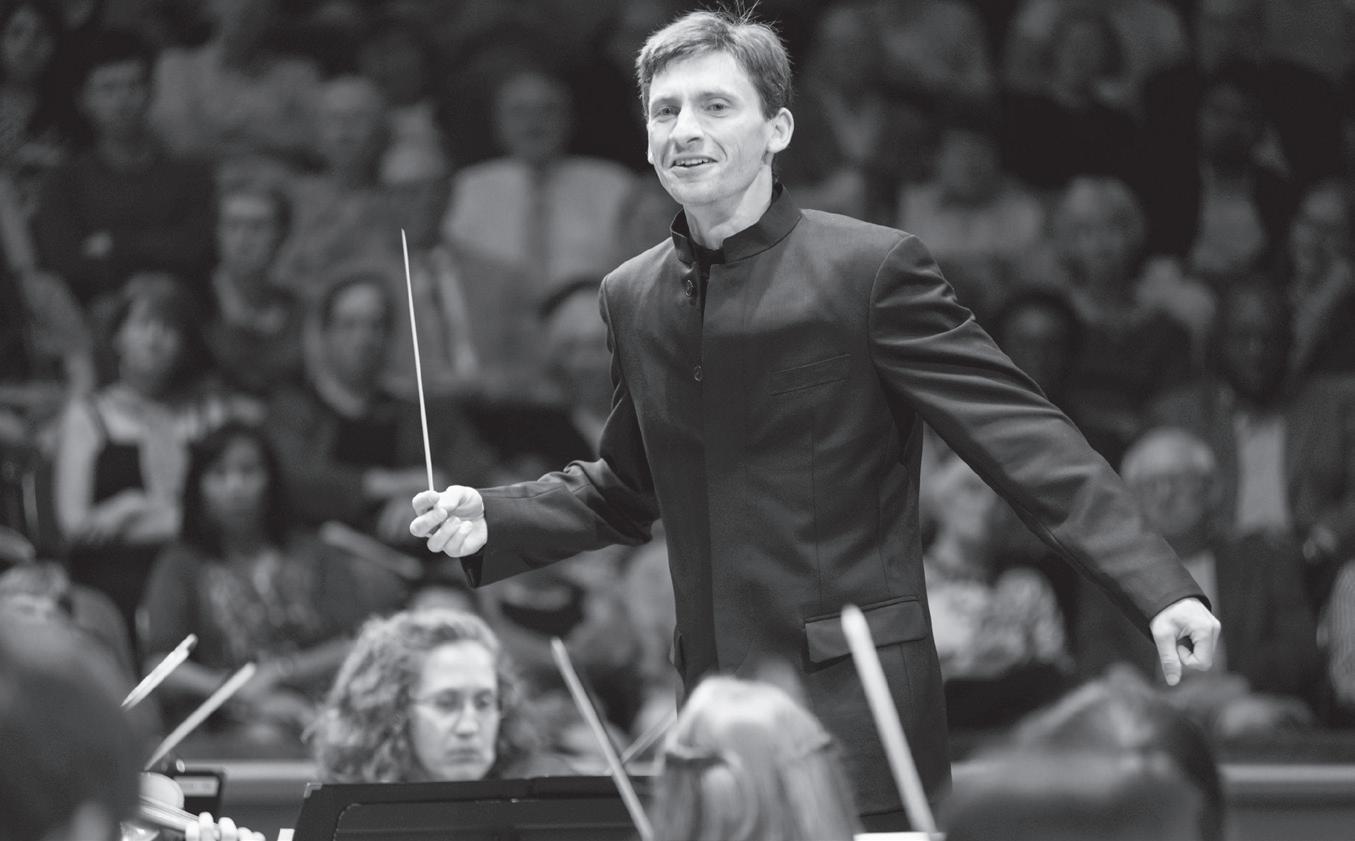

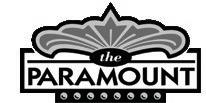
12 | CHARLOTTESVILLE SYMPHONY at the University of Virginia At Par amount The THE CHARLOTTESVILLE SYMPHONY at the University of Virginia KATE TAMARKIN, MUSIC DIRECTO R www.theparamount.net • 434-979-1333 Travel to new worlds, distant galaxies and back to the future with music from your favorite sci-fi films and television shows including Avatar, Close Encounters of the Third Kind, The Expanse, Star Wars (1979 and 2009), X-files and more! Symphonic Sci-Fi Spectacular SATuRDAY, JuNE 10, 7:30PM The Paramount Theater Benjamin Rous, Music Director
PROGRAM NOTES
Concerto for Flute and Orchestra (1993) Christopher Rouse
Born 15 February 1949 in Baltimore, Maryland | Died 21 September 2019 in Baltimore
Approximate duration 28 minutes
This is the Charlottesville Symphony’s first performance of Rouse’s Flute Concerto.
• The impetus for Rouse’s concerto originated in his ancestors’ Celtic roots.
• Lyrical flute melodies supported by strings lend romantic character to the outer movements.
• Listen for quasi-Irish dance rhythms in the two fast segments.
• The central slow movement is an elegy for an English child who was brutally murdered.
Well before his untimely death in 2019, Christopher Rouse had been one of America’s most frequently performed composers, both domestically and overseas. After graduating from Oberlin Conservatory of Music, he studied privately with George Crumb for two years. He then matriculated at Cornell for his doctorate, working with Karel Husa and Robert Palmer. Rouse taught for many years at the Eastman School of Music. From 2002 until his death, he served full time on the composition faculty of the Juilliard School. He won the Pulitzer Prize in music in 1993 for his Trombone Concerto; Musical America named him Composer of the Year in 2009. From 2012 to 2015, he was composer-in-residence with the New York Philharmonic.
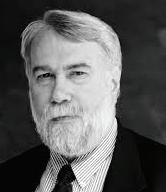
In his earlier works, Rouse favored atavistic motor rhythms and grinding dissonance. In the late 1980s and early 1990s, he moved away from sustained allegro movements toward the soulful and metaphysical. Those elegiac, introspective traits are in evidence in Rouse’s Flute Concerto, which is, in part, a thoughtful rumination on the composer’s ancestral roots. His explanatory note follows.
Although no universal credence for the Jungian concept of “genetic memory” exists, for me it seems a profoundly viable notion. Although both of my parents’ families immigrated to America well before the Revolutionary War, I nonetheless still feel a deep
14 | CHARLOTTESVILLE SYMPHONY at the University of Virginia
ancestral tug of recognition whenever I am exposed to the arts and traditions of the British Isles, particularly those of Celtic origin.
I have attempted to reflect my responses to these stimuli in my flute concerto, a five-movement work cast in a somewhat loose arch form. The first and last movements bear the title “Amhrán” (Gaelic for “song”) and are simple melodic elaborations for the solo flute over the accompaniment of orchestral strings. They were intended in a general way to evoke the traditions of Celtic, especially Irish, folk music but to couch the musical utterance in what I hoped would seem a more spiritual, even metaphysical, manner through the use of extremely slow tempi, perhaps not unlike some of the recordings of the Irish singer Enya.
The second and fourth movements are both fast in tempo. The second is a rather sprightly march which shares some of its material with the fourth, a scherzo which refers more and more as it progresses to that most Irish of dances, the jig. However, by the time the jig is stated in its most obvious form, the tempo has increased to the point that the music seems almost frantic and breathless in nature.
In a world of daily horrors too numerous and enormous to comprehend en masse, it seems that only isolated, individual tragedies serve to sensitize us to the potential harm man can do to his fellow. For me, one such instance was the abduction and brutal murder of the two-year-old English lad James Bulger at the hands of a pair of ten-year-old boys. I followed this case closely during the time I was composing my concerto and was unable to shake the horror of these events from my mind. The central movement of this work is an elegy dedicated to James Bulger’s memory, a small token of remembrance for a life senselessly and cruelly snuffed out.
I completed my flute concerto in Fairport, New York on August 15, 1993, and it was composed through a joint commission from Richard and Jody Nordlof (for Carol Wincenc) and Borders Inc. (for the Detroit Symphony Orchestra).
– Christopher Rouse
While Rouse understood the need for contrast of tempo and mood in his two fast movements, it is ultimately the concerto’s three slow segments that leave the greatest impression. We are experiencing the innermost thoughts of a composer with a deeply spiritual streak—and a social conscience. The flute’s eloquent themes in the outer movements reveal Rouse’s rich melodic and atmospheric gifts. The bassoon solos that frame the string chorale in the central movement, and that chorale’s metamorphosis into a funeral march, are profoundly moving.
The score calls for three flutes, two oboes, two clarinets, two bassoons (2nd doubling on contrabassoon), four horns, two trumpets, three trombones, tuba, harp, timpani, percussion (three players), solo flute and strings. The percussion complement consists of glockenspiel, xylophone, chimes, vibraphone, suspended cymbal, a pair of crash cymbals, rute, sandpaper blocks, tam-tam, tenor drum, snare drum, bass drum and tambourine.
Program Annotator Laurie Shulman sat down with Charlottesville Symphony
Principal Flute Kelly Sulick to discuss the Christopher Rouse Flute Concerto and the long road to this weekend’s performances.
2022-23 SEASON | 15
Christopher Rouse’s Flute Concerto has been on Kelly Sulick’s radar for a long time. “I discovered it when I was in college, at the University of Michigan,” she recalls. “When I first heard it, I was drawn to the music, and learned a few movements for a competition. It’s been on my bucket list to perform with an orchestra ever since.”
When she suggested programming it to Music Director Benjamin Rous, he was enthusiastic, and they scheduled it for spring 2020. Then the pandemic hit—followed by two seasons of postponed performances and a prohibition for wind instruments. “This performance took on a peculiar feeling of unattainability,” Sulick says. Now, three years after it was initially planned, she is thrilled to finally play it on this weekend’s concerts. At the same time, she is keenly aware of its challenges.
“The Rouse is popular among flutists, but it is still not the “go-to” piece among 20th-century flute concertos,” she observes. “It requires a large orchestra, and the orchestra parts are quite difficult.” Those factors have not deterred her or Ben Rous; both are captivated by the concerto’s beauty and gravitas.
“Chris’s composer’s note talks about his Celtic roots in the outer movements,” Sulick continues. “I hear glimmers of that, but it doesn’t overshadow the sheer beauty of his melodic lines. Actually, I hear more of the Celtic element in the jig of the fourth movement! I love how playful it is amid the serene beauty that surrounds it.”
She is sensitive to the dark story of an English boy’s brutal murder that was the inspiration for Rouse’s central Elegy. “That is a very tough aspect,” she acknowledges. “It has moved me to tears in practice sessions. Even if you don’t know the story, the music is emotionally powerful. The audience can relate to the music without knowing the specifics, and I appreciate how this music can connect us with our own sense of humanity and grief.”
Christopher Rouse was known for his willingness to work directly with interpreters of his music, and Sulick was hoping to coach the concerto with him. “He was especially open to working with flutists, and I was planning to reach out to ask him to give me some feedback,” she says. Unfortunately, Rouse died unexpectedly in September 2019, precluding the opportunity to play for him. “It made me so sad, since I had long admired his work. Now, having lived with [the concerto] for several years, his passing has added poignancy and wistfulness for me. In a way, these performances are a posthumous tribute to him.”
She believes there is something for everybody in the concerto. “It has beautiful melodies, and a climactic outburst in the Elegy where the full orchestra plays, almost exploding in a dissonant cacophony. Then there’s that lively flute quartet in the [fourth movement] scherzo that I love. I also appreciate the way Rouse bookends the piece: it opens and closes with an almost magical harp and percussion gesture that surrounds a weaving solo flute line, as if the soloist is telling the audience a fairy tale. There is so much diversity in this concerto!” On this program with lighter music by Johann Strauss II and
16 | CHARLOTTESVILLE SYMPHONY at the University of Virginia
Rimsky-Korsakov, the Rouse Flute Concerto provides balance and an invitation to introspection.
Accelerationen, Op. 234
Johann Strauss II

Born 25 October 1825 in Vienna, Austria | Died 3 June 1899 in Vienna
Approximate duration 8 minutes
This is the Charlottesville Symphony’s first performance of Strauss’s Accelerationen.
• Strauss the younger was known as “The Waltz King” in his native Vienna.
• The occasion for this waltz was an engineering students’ ball.
• Acceleration in this waltz’s principal segment attests to the composer’s humor.
• Try to imagine dancing to a waltz that shifts tempo midstream!
The family name of Strauss is inextricably linked with the culture of 19th-century Vienna, and more specifically with the immense popularity of the waltz. The older Strauss, Johann Sr. (1804-1849), was a conductor and violinist as well as a composer. By 1829 he had founded his own orchestra, providing a convenient vehicle for promoting his own compositions. These capitalized primarily on the popularity of certain regional dances: first polkas and waltzes, later quadrilles (which he learned in Paris; Strauss is credited with introducing the quadrille to Austria). His style took its cue from the violin. Strauss conducted with violin in hand, and the fiddle’s capabilities made a strong imprint on his music. By 1833 he was touring extensively throughout Europe.
All three of Johann Sr.’s sons became successful composers, but in Johann II, the family genius flowered most brilliantly. By 1844, when he was 19, Johann was his father’s most significant rival, forming his own dance orchestra. After the elder Strauss’s death in 1849, Johann II merged the two ensembles. Between 1856 and 1886 he toured widely throughout Europe, also traveling to Russia, England and the United States.
Strauss’s best music is characterized by wonderful rhythmic sweep and a flair for orchestral detail. His ballroom pieces rise beyond the realm of the dance hall without sacrificing the accessibility of its original intended venue.
Accelerationen dates from 1860. The occasion was a Valentine’s Day ball
2022-23 SEASON | 17
for the students at Vienna’s Technical College at the splendid Sofiensaal. The first of Strauss’s larger-scale waltzes to enter the repertoire, it comprises a slow introduction and a series of waltz segments. This is a form he would refine in his later concert waltz masterpieces, including Roses from the South and On the Beautiful Blue Danube. The title, Accelerations, comes from the principal waltz theme, which starts haltingly and gathers momentum; the analogy is the whirling wheels of a locomotive as it gathers steam. Similar tempo shifts occur within some of its segments. Strauss’s clever emulation of a well-engineered machine was a salute to the organization that had commissioned him. An apocryphal story holds that he composed that catchy theme the same day as the premiere, scrawling it down on the reverse of a menu; he purportedly pulled together the larger musical structure in record time, for its premiere that very evening.
The new waltz rapidly entered the repertoire and became a performance standard for Strauss’s orchestra. When the piano reduction was published a few months after the February ball, the cover included images of Zephyrus, the Greek god of the gentle west wind; a hot air balloon, a steam train, a paddle steamer, and telegraph wires.
The score calls for woodwinds in pairs plus piccolo, two horns, two trumpets, three trombones, timpani, snare drum, triangle, bass drum, cymbals, harp, and strings.
Banditen-Galopp, Op. 378
Johann Strauss II
Approximate duration 3 minutes
This is the Charlottesville Symphony’s first performance of Strauss’s Banditen-Galopp.
• Polkas and galops are both fast dances in duple meter.
• This one was salvaged from an operetta less successful than Die Fledermaus.
• Percussion provides vivid punctuation in this whirlwind movement.
While the younger Strauss is best known for his waltzes, polkas, and galops, he also tried his hand at operetta, seeking to match in Vienna the success that his contemporary Jacques Offenbach was enjoying in Paris. He succeeded brilliantly with Die Fledermaus (1874); but several subsequent efforts were less successful. Prinz Methusalem opened at Vienna’s Carltheater just after New Years 1877. It suffered from a weak libretto, and had relatively modest runs in London and New York after the Vienna premiere. Strauss
18 | CHARLOTTESVILLE SYMPHONY at the University of Virginia
salvaged Banditen-Galopp from the score, recasting it as a fast dance. The title comes from a group of bandits in the operetta who are scheming to overthrow the Prince.
Strauss’s orchestral polkas tend to be shorter than his waltzes. Most are in tripartite form, neatly constructed of successive eight-bar segments. Polkas divide into two principal types: polka française, a graceful French version, and polka schnell, a faster variety that often verged on the livelier galop. By labeling this work “Galop-Polka”, Strauss made his intentions clear. Banditen-Galopp’s brevity surely reflects the dancers’ inability to sustain such high energy for more than 3 minutes!
The score calls for two flutes (second doubling piccolo), two oboes, two clarinets, two bassoons, four horns, two trumpets, three trombones, timpani, percussion and strings.
Frühlingsstimmen, Op. 410
Johann Strauss II
Approximate duration 6 minutes
This is the Charlottesville Symphony’s first performance of Strauss’s Frühlingsstimmen.
• Frühlingsstimmen originally had a voice: a solo soprano.
• A reigning diva at the Vienna Court Opera requested this work.
• This is an example of Strauss’s symphonic approach to the waltz.
• Notice how smoothly he navigates transitions between segments.
Fruhlingsstimmen [Voices of Spring] is a relatively late work from 1883. It differs from most of Strauss’s other waltzes in that it was originally for voice and piano. Strauss had been asked to compose a piece for a Vienna Court Opera Theatre prima donna named Biancha Bianchi. (That was her stage name; born Bertha Schwarz, she was from Heidelberg.) The occasion would be a benefit concert for the imperial couple’s foundation supporting indigent Austro-Hungarian subjects in Leipzig. Strauss had experience with choral waltzes (the Blue Danube, whose original version included men’s chorus, is the foremost example), but had not written one for solo voice. He was intrigued by the challenge.
Of course, he did have ample experience with operetta. By 1883, he had ten operettas under his belt, including the fabulously successful Die Fledermaus (1874). When the request for the Bianchi waltz arrived, he was hard at work on Eine Nacht in Venedig [A Night in Venice] with Richard Genée, his librettist. Genée agreed to write the lyrics for Bianchi’s solo; Voices of
2022-23 SEASON | 19
Spring was the result. The premiere on 1 March 1883 at Vienna’s Theater an der Wien had a mixed reception; audiences were unaccustomed to a coloratura soprano with their Strauss waltzes.
Soon Strauss took the new number on tour, however, and enchanted audiences in Russia and Italy with the novel new work. The pianist Alfred Grünfeld played it extensively in solo recitals, adding to its popularity. Listeners have been captivated by it ever since, making the score one of Strauss’s most treasured pieces. With the vernal equinox a month behind us, spring in Charlottesville is in full flower. This movement is sure to heighten our appreciation that, as the days continue to lengthen, summer is around the corner.
The score calls for flute, piccolo, two oboes, two clarinets, two bassoons, four horns, two trumpets, three trombones, timpani, bass drum, side drum, harp and strings.
Éljen a Magyar!, Op. 332
Johann Strauss II
Approximate duration 3 minutes
This is the Charlottesville Symphony’s first performance of Strauss’s Éljen a Magyar!
• Strauss composed this polka for Pest, four years before the city was united with Buda.
• The title is a salute to Hungarian pride.
• Strauss’s music is a polka schnell, a fast polka related to the brisk galop.
From 1863 until 1871, Johann Strauss II was the official Hofballmusikdirektor [Director of Music for Court Balls] to the Imperial Court in Vienna, a position that kept him especially busy throughout Fasching [carnival season]. During the 1869 Lenten season, Johann and his brother Josef were preparing for their annual Strauss Orchestra summer concerts in Pavlovsk, outside St. Petersburg. They had launched this popular Russian series in 1855. First, however, they fulfilled a booking in Hungary, traveling to Pest for a pair of mid-March concerts that coincided with the opening of the new Redoutensaal building. In honor of the occasion, Johann composed a new polka dedicated to the Hungarian nation. The title, Éljen a Magyar!, is translated as “Long live the Magyar!”
The polka is a dance in duple meter that originated in 1830s Bohemia (not in Poland, as is often assumed). All the major composers of ballroom music wrote polkas, in part because the dance—in moderate duple time—provided a pleasant change of pace to waltzes and the brisker galop. Éljen a Magyar!, however, is a polka schnell—a fast polka—that worked equally well as an audience energizer in the concert hall.
20 | CHARLOTTESVILLE SYMPHONY at the University of Virginia
Since childhood, Strauss was thoroughly at home with Hungarian musical style as well as his native Austrian music. This lively polka captures Magyar spirit and, in its coda, quotes briefly from the celebrated "Rákóczi March." France’s Hector Berlioz had made Rákóczi famous through his use of it in The Damnation of Faust, but Hungarian audiences claimed it as part of their patrimony and responded ecstatically to Strauss’s lively new polka. Abundant cymbal crashes and punctuation from the bass drum hypercharge this brisk dance. In Vienna and Budapest, performances traditionally end with the members of the orchestra shouting “Éljen!” in unison after the final chord.
The score calls for two flutes (second doubling piccolo), two oboes, two clarinets, two bassoons, four horns, three trumpets, three trombones, timpani, percussion and strings.
Capriccio espagnol, Op. 34
Nikolai Rimsky-Korsakov

Born 18 March 1844 in Tikhvin, near Novgorod, Russia | Died 21 June 1908 in Lubensk, near St. Petersburg, Russia
Approximate duration 15 minutes
This is the Charlottesville Symphony’s first performance of RimskyKorsakov’s Capriccio espagnol
• While serving in the Russian Navy, Rimsky-Korsakov visited one Spanish port.
• He wrote Capriccio espagnol as an orchestral showpiece.
• Rimsky’s fascination with Spanish culture comes through in the Iberian flavor.
Rimsky-Korsakov turned his attention to Capriccio espagnol in summer 1887, while orchestrating his friend Alexander Borodin’s opera Prince Igor (which includes the famous Polovtsian Dances). During his early years in the Russian navy, Rimsky had sailed the Mediterranean. Although his ship only stopped in one Spanish port, he wished to capture his impressions of the country, in part to capitalize on the Russian vogue for all things Spanish. His first thought was a violin fantasy on Spanish themes. Instead, the piece developed into an orchestral showpiece. In his autobiography, the composer stated:
2022-23 SEASON | 21
The opinion formed by both critics and the public, that the Capriccio is a magnificently orchestrated piece, is wrong. The Capriccio is a brilliant composition for the orchestra. The change of timbres, the felicitous choice of melodic designs and figuration patterns, exactly suiting each kind of instrument, brief virtuoso cadenzas for instruments solo, the rhythm of the percussion instruments, and so on, constitute here the very essence of the composition and not its garb or orchestration. The Spanish themes, of dance character, furnished me with rich material for putting in use multiform orchestral effects.
Capriccio espagnol divides into five sections, unified by the recurring music of the opening Alborada. In the third section, for example, Rimsky-Korsakov repeats the music of the Alborada, changing the orchestration and adding a brilliant violin solo, a vestige of the violin fantasy from which the entire work originated.
The composer dedicated Capriccio espagnol to the orchestra of the Imperial Russian Opera. The orchestra apparently took to the piece immediately. Late in life, when discussing conductors and conducting, Rimsky-Korsakov often referred to this work. As he saw it, having the orchestra favorably disposed toward a work was of primary importance, and he held that his own première of Capriccio went superlatively not because of him, but simply because the players liked the work. Audiences have shared their opinion for more than 125 years.
The score calls for woodwinds in pairs plus piccolo and English horn, 4 horns, 2 trumpets, 3 trombones, tuba, timpani, castanets, triangle, tambourine, cymbals, bass drum, snare drum and strings.

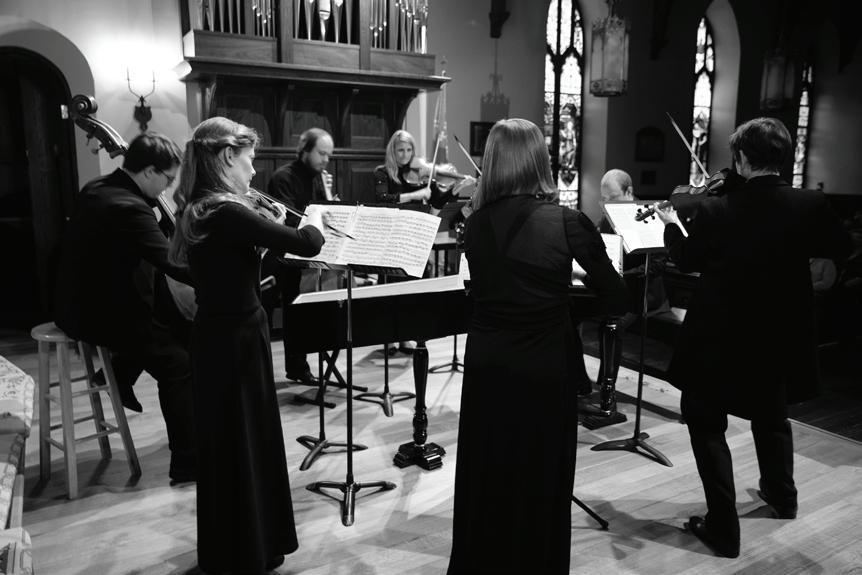 by Laurie Shulman ©2022
by Laurie Shulman ©2022
22 | CHARLOTTESVILLE SYMPHONY at the University of Virginia
Southern Warmth Spanish, Croatian, Portuguese & Italian May 5–7 with soprano Addy Sterrett www.tnrbaroque.org / info@tnrbaroque.org / 434.409.3424 Staunton / Richmond / Keswick
OCTOBER 11
ALEXANDER MALOFEEV, piano


PRINCIPAL UNDERWRITERS: THE TUESDAY EVENING CONCERT SERIES BOARDinmemoryofPaulCantor
Beethoven, Medtner, Rachmaninoff
OCTOBER 25
TAKÁCS QUARTET
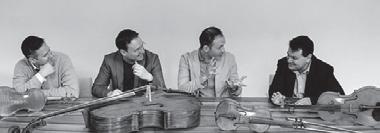

Mendelssohn, Bartók, Dvorák
PRINCIPAL UNDERWRITER: JACK DARRELL
UNDERWRITER: DAVID SANSONE
NOVEMBER 29
FEBRUARY 21
YEVGENY


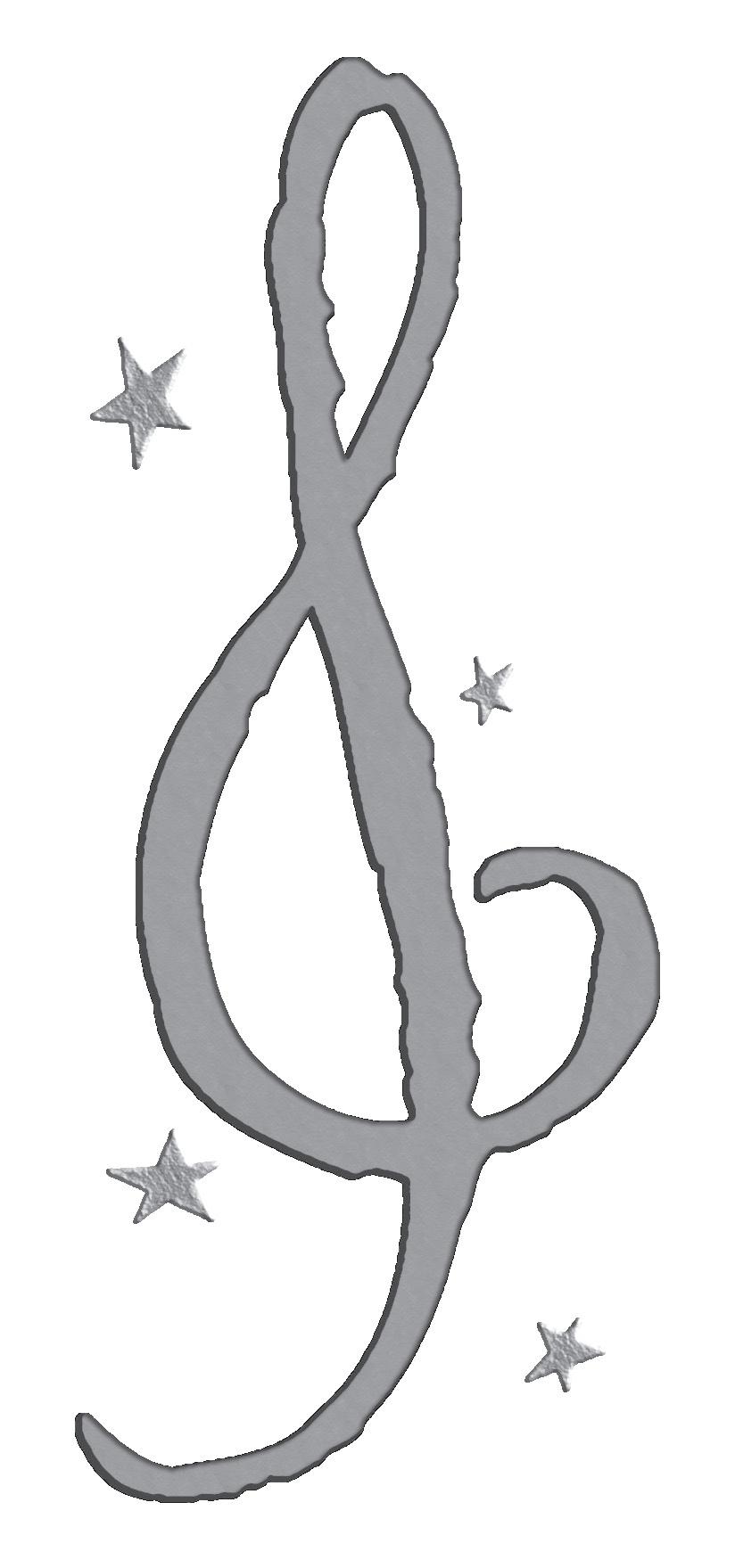
KUTIK, violin & ANNA POLONSKY, piano
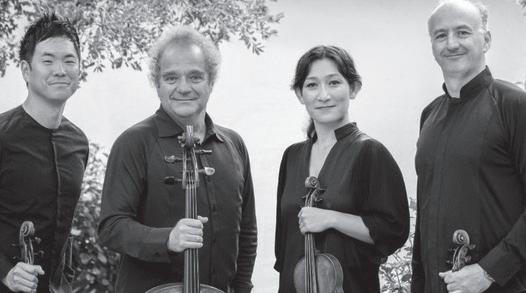
Brahms, Milhaud, Strauss, Ravel

PRINCIPAL UNDERWRITER: MAURICE AMADO FOUNDATION
PRINCIPAL UNDERWRITER: ANONYMOUS
ORPHEUS CHAMBER ORCHESTRA with ALESSIO BAX, piano
PRINCIPAL UNDERWRITER: VESTA LEE GORDON FUND c/oCharlottesvilleAreaCommunityFoundation

UNDERWRITERS: CAROLYN & DAVID BEACH
MARCH 28
BENEDETTI ELSCHENBROICH
GRYNYUK TRIO
APRIL 11
THE TALLIS SCHOLARS
DIRECTOR PETER PHILLIPS 50th Anniversary Tour
Gibbons, Tallis, Muhly, Byrd, Palestrina, Rutter, Gombert, des Prez, Pärt

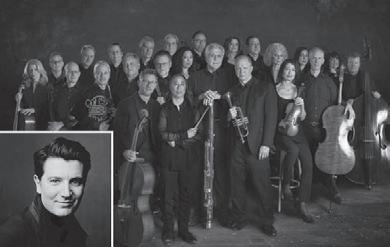
Respighi, Chopin, Dvorák
PRINCIPAL UNDERWRITERS: ROBERT & JANIS CHEVALIER
PRINCIPAL UNDERWRITER: VIRGINIA NATIONAL BANK

Schubert, Tchaikovsky
UNDERWRITER: BOB BOND in memory of Kathy Bond
UNDERWRITER: MARY V. CONNELL
UNDERWRITERS: DAVID W. GARRISON & MARY JANE KING
APRIL 25


JERUSALEM QUARTET
Mendelssohn, Webern, Tchaikovsky
PRINCIPAL UNDERWRITER: GEORGE W. LOGAN in honor of Dr. Craig Slingluff, Jr.
UNDERWRITER: ALISON WEBER in honor of Karen Pellón
TICKET AND CONCERT INFORMATION:
2022-23 SEASON | 23 Tuesday evening ConCerT series 2022/2023 s eason C abell H all a udi T orium 7:30 pm u niversi T y of v irginia CALL 434-244-9505 OR WWW.TECS.ORG

24 | CHARLOTTESVILLE SYMPHONY at the University of Virginia

2022-23 SEASON | 25
CHARLOTTESVILLE SYMPHONY SOCIETY Annual Fund Contributors
The donors listed here have made gifts since March 22, 2022 in support of the orchestra’s musicians, performances and education and outreach programs. We thank them for their generosity and confidence in our mission!
The Charlottesville Symphony Society is pleased to recognize the extraordinary support of our long-term donors, whose dedication to the Symphony has played a crucial role in its growth and development. The symbols below denote the number of years that a supporter has made a gift to the Symphony’s Annual Fund.
H
DIAMOND CIRCLE
$10,000 AND ABOVE
Mrs. Richard M. Ader
Virginia Cenedella l
The Joseph and Robert Cornell Memorial Foundation
Dr. Robert L. Elliott l
Vesta Lee Gordon Fund at the CACF s
Ruth H. Shepherd
VIRTUOSO CIRCLE
$5,000 - $9,999
Roger and Donna Authers l
Robin D. Baliles l
Dolores G. Bedell u
Joanne and Haywood Blakemore
Karin Bonding l
Elizabeth Natoli l
Office of the Provost and the Vice Provost for the Arts
Stewart and Mary Buckle Searle
Bill and Missy Shenkir n
Mr. and Mrs. Richard Smith
SYMPHONY CIRCLE
$2,500 - $4,999
Theodora and Robert Carey l
Robert and Janis Chevalier
Irv and Tina Cox
Anna M. Day Foundation
Rosemary and Charles Grisham
Ralph and Genevieve B. Horween Foundation
Janet Kaltenbach
Bill and Bev McCauley
Dr. and Mrs. Robert Meyer
Drs. Kay and Davis Parker s
David and Rosalyn Preston
Mr. and Mrs. Paul Sartori
The Strider Family
Susan Thomas and Stan Rose
William vonReichbauer
Alf and Debbie Weaver u
MUSIC DIRECTOR
$1,500 - $2,499
Lynne Bair
Tom and Benham Brown
James R. Carnes and R. Clark Hantzmon s
Scott Colley
Carol Cooper s
Pat and Ed Davis H
Mrs. Edward G. Dinwiddie s
Bill and Laurie Duxbury
Jennifer S. Gaden u
Mr. and Mrs. Allen Hench
Dory and Murray Hulse l
Mary Ann Leeper l
Bill and Lizzie McCowen
Joanne B. Robinson
Betty and John Scott u
Wendy and Nick Seay
Jeff Strider
Capt. and Mrs. J.J. Weber, USN (Ret)
Richard Will and Melanie Lepper
COMPOSER
$750 - $1,499
Mary Jae Abbitt-Sushka and Peter Sushka
David and Anitra Archer s
Ruth and Malcolm Bell s
Mr. and Mrs. John H. Birdsall s
Janet Bolla
26 | CHARLOTTESVILLE SYMPHONY at the University of Virginia
= 35 + years u = 30 – 34 years n = 25 – 29 years s = 20 – 24 years l = 15 – 19 years
Joe and Annelise Brand
David Brown s
Michael Cameron and Christine Atkins
Bascom Deaver u
Lucille and Kennerly H. Digges u
Bobbi and Lewis Dunn
Dr. and Mrs. William Grosh s
Nita Grupe s
Ruth Haile
John and Ilse Hendrix l
Mr. and Mrs. R.K. Hopkins, Jr. n
Phillip and Susanne Hubrig
James M. Kauffman and Jeanmarie Badar l
Aileen Wilson Kelly l
Peyton and Bill Lewis
Brian and Jean Mandeville
Bert and Elizabeth Page
Don and Jackie Pamenter s
Elizabeth and Bill Phillips l
Donna Plasket and David Breneman l
Eric Rugart
Cynthia and Robert Ryan
Betty Strider* H
Elsie and Mac Thompson l
Hellmut Walter
George Yin and Mary Walter l
CONCERTMASTER
$500 - $749
Anonymous (2)
David and Carolyn Beach H
Collins and Charlotte Beagle s
Lillian and Michael BeVier
Leslie and Larry Bouterie
Katherine Brooks and George Beller
Bob and Bobbie Bruner
Peter Buchanan l
Duncan and Susan Campbell n
Hua Helen Chen
Shelby and Roy Clements l
Debbie and Geof Close
Mary Vee Connell
Robert and Eileen Conroy
Mr. and Mrs. Ronald G. Dimberg
Andrea and Charles Domroe
JoEllen and Kirk M. Dunklee s
Wendy Ferguson
Anne and Gene Fife l
Nancy Fleischman and Julio Trigo
Mr.* and Mrs. Stanley S. Hazen n
Elizabeth Leverage Hilles and W. Scott Hilles l
Robert and Gloria Huston H
Ulrike Joiner and Dale Weigel
Carolyn Kelly u
Mrs. Christine S. Kennedy s
Kate B. Kessler l
Ian Kimbrough
Dr. Carl Lynch and Linda Wenger
Alice P. Meador Fund at the CACF
Elizabeth Meiburg
Mental Health Services Fund at the CACF n
Jon and Mary Mikalson s
Sue Ann and Raymond F. Morgan n
Jill Payne
Rick and Dee Pietsch l
Dale and Maureen Pollart
Richard Powers
Dr. and Mrs. George W. Riddick l
Warren K. Russ, Jr. n
Charles and Julie Stamm
Mary St. Clair
Jennifer Sulzberger and Robert DuCharme
Richard and Nelda Vaughan s
Carolyn and Joseph Warden
Caroline and Bill Wilhelm l
Sharon Wood s
PRINCIPAL PLAYER
$250 - $499
Anonymous
Louisa C. Barrett Family Charitable Fund s
Michael Bednar and Elizabeth Lawson
Mrs. William S. Blackford
Bocock/Hitz Fund at the CACF
Lanier Sykes Bogen
Li Boynton
Cece Brooks
Chuck and Candie Bruse
Jennifer and Eric Bryerton
Mrs. Rosemary Burns l
John and Susan Carpenter
Roxanne Chandler s
The Charles Fund
Jamie and Bruce Chase
Mr. and Mrs. Gerald Collins l
Charlie and Rosemary Cona
Pamela and Peter Dennison
Glee Deodhar
Ruth Douglas l
Eleanor Droney
Gay R. Frix l
Elizabeth Gatewood u
Caroline and John Griffin s
David and Carol Hogg
Stan and Julie Kaslusky
Masashi and Yasuko Kawasaki l
John Kuchinski
Stephanie Lowenhaupt
Robert and Patricia Macionis l
Mrs. John C. McCoid II
Liza Millett l
Richard and Donna Mullikin l
James and Joan Mummery
Kent Olson and Marsha Trimble
Stephen and Dana Patek
Sue B. Pickett s
2022-23 SEASON | 27
Mary Reiman
Millicent and Andrew Reynolds
Donald L. and Meg Riechman s
Mrs. James Roche
William Sherman
Laurie Shulman
Chuck Swinney
Kate Tamarkin and Clifford Arnold
Robert Thompson
Linda Verhagen Fund at the CACF
Virgil and Margaret Wagner Fund at the CACF
David Whitcomb
Reg and Kathie Woods n
Jock Yellott
Ms. Marie Arline Zabarowski
MUSICIAN $100 - $249
Anonymous (3)
Allan Anderson
John and Lina Anderson l
Mary Jo and Carlos Ayers
Eve and Larry Barnett
Leslie and Martin Baruch
Lois W. Baylor
Dr. Thomas H. Biggs
Mrs. Robert M. Blizzard l
Lori and Larry Borish
Bonnie and Dick Brewer
Mr. Eric Brissman l
Don and Constance Brown
Judy and Steve Brown s
Richard and Diane Brownlee
Mary Jane and David Bullen
James and Elizabeth Burch
Pamela and William Calary
Melba Campbell
Bruce Cauthen
Claudia and Philip Clark
Elizabeth Coffey
Rosemary Connelly
Gwyn and Brian Conway
Stephanie Corriveau
LTC Dwight L. Cragun USA (Ret) H
Dr. and Mrs. James W. Craig
Mr. and Mrs. John T. Daggett, Jr.
Brent B. Davis
Doug and Drene De Good
Ursula and Zygmunt Derewenda
Lt. Col. and Mrs. John F. Down (Ret) l
Lynda Dunn
Sally Pecora Dunn
Sara Leslie Eades
Dr. and Mrs. R. Jack Eastham
Clara Eden
Mary Ellen Edmonds
Evelyn Edson l
Anna C. Farrell
Dori and Mitch Feldman
Tom and Anna Ferrell
Jean Fletcher Fowler
Brian Fox s
Pamela and Brendan Fox
Peter and Diana Freeman
Elizabeth E. Friberg
Palmer and Richard Gard
Dolly Garrison
Martha and Douglas Gilpin
Grace and Ted Giras s
Paula Gladieux
David and Deb Godden
Bruce and Mary Grant
Bruce and Jenny Greyson
Leanne Grove l
Margaret M. Grove s
Barbara Grzymala
Jane and Helen Hammond
Jim and Kim Hattaway
Mary Henderson
Michael J. Henke and Judy S. Campbell
Paul and Laura Hoffman l
Ginger and Bob Holub
John and Mary Pat Hulburt
Mrs. Carl Hull u
Phil Ianna and Julie Russell
Roussie and Larry Jacksina
Jeffrey James and Marlene Weaver
Jim and Nina Johnston
Mr. and Mrs. L. Robert Johnston, Jr.
Phyllis Koch-Sheras and Peter Sheras s
Joanne Kopp
Jacqueline Langholtz and William Taylor
Steve and Alice Layman
Ock Lee
Tara Little
Ryan and Sharin MacPherson
John and Keggie Mallett
Liz and James Marshall
Ellen M. Mayoue
Karyl-Leigh and Mark Megaw
Elizabeth Merrill
Craig and Marie Miller
Rosemary Miller
Stauffer Miller
Derry Miller-Meyung u
Ralph and Jean Minehart
Barbara Ohanlon*
Mary Ann and Bill Petri
Sarah Chase Petrik
John and Suzan Pezzoli l
Ruth G. Picker
Eloise R. Pingry
Mr. and Mrs. Ron Poulsen
Champe and Jane Ransom n
Marc and Eileen Read
Anne and Fred Ribble l
Christian P. Roberts l
28 | CHARLOTTESVILLE SYMPHONY at the University of Virginia
Mr. and Mrs. John E. Roberts, Jr. s
Mary Ropka and John Philbrick l
Victoria Sabin
Neianne Sambile
Linda A. Seabrook
Chris and Jennifer Sechow
Sara Sgarlat and M Leonard Baker
Jerry Short
Mr. William W. Sihler
Patrick Smith
Regina Spencer
Janet and John Stack l
Mr. and Mrs. Richard Stock
Bill and Kathy Sublette
Christine Sweeters l
George Truesdail
Horst and Niqui Wallrabe s
Stu White
Dr. Suzanne Wilson
Margot and David Youngs
*deceased
The Charlottesville Symphony Society would also like to thank the 39 donors who gave up to $99 over the past year.
GIFT IN MEMORY OF JANE HOWARD BUCHANAN
Peter Buchanan
GIFT IN MEMORY OF ELIZABETH CAUTHEN
Bruce Cauthen
GIFTS IN MEMORY OF SUE B. EVANS
Leslie and Martin Baruch
GIFT IN MEMORY OF JOY FRITH
Stewart and Mary Buckle Searle
GIFT IN MEMORY OF EDWIN E. GATEWOOD, JR.
Belinda and Wayne Pullen
GIFT IN MEMORY OF THOMAS GRZYMALA
Barbara Grzymala
GIFT IN MEMORY OF SVETLANA KIMBROUGH
Ian Kimbrough
GIFT IN MEMORY OF CHARLEY LEPOW
Ginny Lepow
GIFT IN MEMORY OF EUGENE MEYUNG
Mrs. William S. Blackford
GIFTS IN MEMORY OF BETTY STRIDER
Jean Fletcher Fowler
Martha and Douglas Gilpin
Sandra Holland
Mr. and Mrs. L. Robert Johnston, Jr.
Derry Miller-Meyung
Llewellyn Morgan and Patrick Shields
The Strider Family
Judith and Steven Wasserman
GIFTS IN MEMORY OF CARY TURNER
Pamela and William Calary
Stephanie Corriveau
Thi Dam
Sara Leslie Eades
Dr. Robert L. Elliott
Ruth Haile
Janet Kaltenbach
John Kuchinski
Ryan and Sharin MacPherson
Rosemary Miller
Sarah Chase Petrik
David and Rosalyn Preston
Mary Alice and Rob Rippe
Eric Rugart
Mr. and Mrs. Paul Sartori
Stewart and Mary Buckle Searle
Bill and Missy Shenkir
Patrick Smith
Denise Sutter
GIFT IN MEMORY OF MARTHA AND JULES VALLAY
Liz and James Marshall
GIFT IN MEMORY OF GITTE WALTER
Hellmut Walter
GIFT IN MEMORY OF CHARLES AND HELEN WEAVER
Alf and Debbie Weaver
GIFT IN HONOR OF ADAM CARTER
Pamela and Brendan Fox
GIFTS IN HONOR OF ADRIENNE EBBERT AND MATTHEW PEARSON-BECK
Li Boynton
Hua Helen Chen
2022-23 SEASON | 29
GIFT IN HONOR OF ROSEMARY AND CHARLES GRISHAM
Stewart and Mary Buckle Searle
GIFTS IN HONOR OF JANET KALTENBACH
Elizabeth Leverage Hilles and W. Scott Hilles
Stauffer Miller
Laurie Shulman
GIFT IN HONOR OF ALEXANDER MacPHERSON
Linda A. Seabrook
GIFT IN HONOR OF RYAN AND SHARIN MacPHERSON
Rosemary and Charles Grisham
GIFT IN HONOR OF MISSY SHENKIR
Elizabeth Merrill
IN-KIND GIFT
Irv and Tina Cox
Stewart Searle, Bravi Films
This list reflects gifts posted from March 22, 2022 to March 22, 2023. If your name is listed incorrectly or omitted, please contact the Symphony Office at (434) 924-3139.
THE PATRICIA F. DAVIS ENDOWED KEYBOARD CHAIR
The Charlottesville Symphony Society gratefully acknowledges the following individuals for helping to establish the Patricia F. Davis Endowed Keyboard Chair.
Brandt and Kathy Allen
David and Anitra Archer
Roger and Donna Authers
Nancy Bertram
Mrs. William S. Blackford
Katherine Brooks and George Beller
Tom and Benham Brown
Bob and Bobbie Bruner
Peter Buchanan
Candace and Charles Burton
Theodora and Robert Carey
Virginia Cenedella
Derwood and Johanna Chase & Chase Investment Counsel Corporation
Robert and Janis Chevalier
Mary Vee Connell
Carol Cooper
Georgia Davidson
Lucille and Kennerly H. Digges
Patricia and Patrick Dougherty
Bobbi and Lewis Dunn
Dr. Robert L. Elliott
Petie and Ernie Ern
Joan Fadden
Anne and Gene Fife
Peter and Diana Freeman
Paula Gladieux
Margaret H. Hart
John and Ilse Hendrix
Judy and Michael Hightower
Mr. and Mrs. R.K. Hopkins, Jr.
Janet Kaltenbach
Rachel Keen
Karen Kopf
Cheri Lewis
Cheryl and Ron Lewis
Brian and Jean Mandeville
Cyndy and David Martin
Elizabeth Natoli
Ms. Carol Parkerson
Elizabeth and Bill Phillips
Rick and Dee Pietsch
Donna Plasket and David Breneman
David and Rosalyn Preston
Donald L. and Meg Riechman
Virginia and James Rovnyak
Shelly and Marc Ruggiano
Mr. and Mrs. Paul Sartori
Betty and John Scott
Dr. Daniel L. Seale
Stewart and Mary Buckle Searle
Charlene Sedgwick
Bill and Missy Shenkir
Katy and Kent Sinclair
Elsie and Mac Thompson
Peter Thompson
William vonReichbauer
Kathryn and Houston Wood
30 | CHARLOTTESVILLE SYMPHONY at the University of Virginia
THE ENCORE SOCIETY
The Charlottesville Symphony Society gratefully acknowledges the following Encore Society members who have made estate gifts or named the orchestra in their estate plans, securing a legacy of music excellence for future generations.
Anonymous
Mr. Clifford Arnold
Frederica Bacher
Mr.* and Mrs. James L. Brown
James R. Carnes
Elizabeth G. Cauthen*
Virginia Cenedella
Philip H.* and Carol Cooper
Frances M. Dulaney
Dr. Lewis A. and Dr. Bobbi B. Dunn
Jason I. Eckford, Jr.*
Thomas Grzymala*
Elizabeth Leverage Hilles and W. Scott Hilles
Henry J. Javor*
Tom and Peggy MacAvoy*
Christine J. Moore and Robert G. Bartolo
John and Carolyn Rosenblum
Bill and Missy Shenkir
Ruth H. Shepherd
Kate Tamarkin
Rebecca W. West
*deceased
TRIBUTE GIFTS TO THE CHARLOTTESVILLE SYMPHONY
In Honor of Someone You Care About To Celebrate a Special Occasion As an Expression of Sympathy
In Memory of a Loved One
Your tax-deductible gift not only commemorates a special person or occasion, but also provides financial support to the Charlottesville Symphony Society. You will be participating in a tradition of generosity that undergirds excellence in concert programming, pre-K-12 education initiatives and community engagement activities.
When you make a gift in honor of or in memory of a friend, relative or colleague, the individual or family named will receive an acknowledgement without reference to the amount of the gift. Your name, along with the names included in your tribute, will be listed in the Charlottesville Symphony playbill.
To explore ways of expressing your support for the Charlottesville Symphony Society during significant milestones in life, please contact Director of Development Ryan MacPherson at (434) 243-2513 or rnm4a@virginia.edu.
2022-23 SEASON | 31
Welcome to the Concert!
Accessibility Services
n Wheelchair seating is available at Old Cabell Hall and the MLK PAC. Arrangements for accessible seating may be made through the University of Virginia Arts Box Office when purchasing tickets.
n Large print programs are available. Please ask an usher.
n If you know someone who loves music and would benefit from these services, please share this information.
Cameras and Recording Devices are distracting for both musicians and audience members. Audio and video recording and photography are strictly prohibited during the concert. Patrons are welcome to take photos before the concert, during intermission and after the concert.
Children The recommended age for admission to concerts is six or older. Babies in arms will not be admitted. All children must be seated with an adult.
Educators interested in the orchestra’s programs for school students may obtain more information by contacting Director of Youth Education Elizabeth Roberts at education@cvillesymphony.org

Emergencies Medical or other emergencies should be brought to the attention of any staff member or usher.
Food and Beverages are not permitted in the auditorium.
Fragrances The orchestra promotes a fragrance-free environment.
Latecomers All those arriving after the start of the concert will be seated during the first convenient pause in the program.
Lost and Found Items—Please call Old Cabell Hall at 434.924.3052 or MLK PAC at Charlottesville High School 434.245.2410
PLEASE TURN OFF all pagers, watch alarms, cell phones and other electronic devices before the start of the concert.
Photographing & Sound Recording of any performance without the written permission of orchestra management is prohibited.
Program designed by Linda Berry of Designer’s Ink, and printed by PrintSource.
Smoking Old Cabell Hall and the MLK PAC at Charlottesville High School are smoke-free facilities.
Tickets for upcoming concerts may be purchased at the University of Virginia Arts Box Office located in the lobby of the Drama Building at 109 Culbreth Road, across the street from the Culbreth parking garage. Hours are Tuesday–Friday from 12:00–5:00 p.m. Call 434.924.3376 or visit— www.artsboxoffice.virginia.edu.
32 | CHARLOTTESVILLE SYMPHONY at the University of Virginia
"This will be our reply to violence: to make music more intensely, more beautifully, more devotedly than ever before."
—1963,
Leonard Bernstein,
following the assassination of President John F. Kennedy





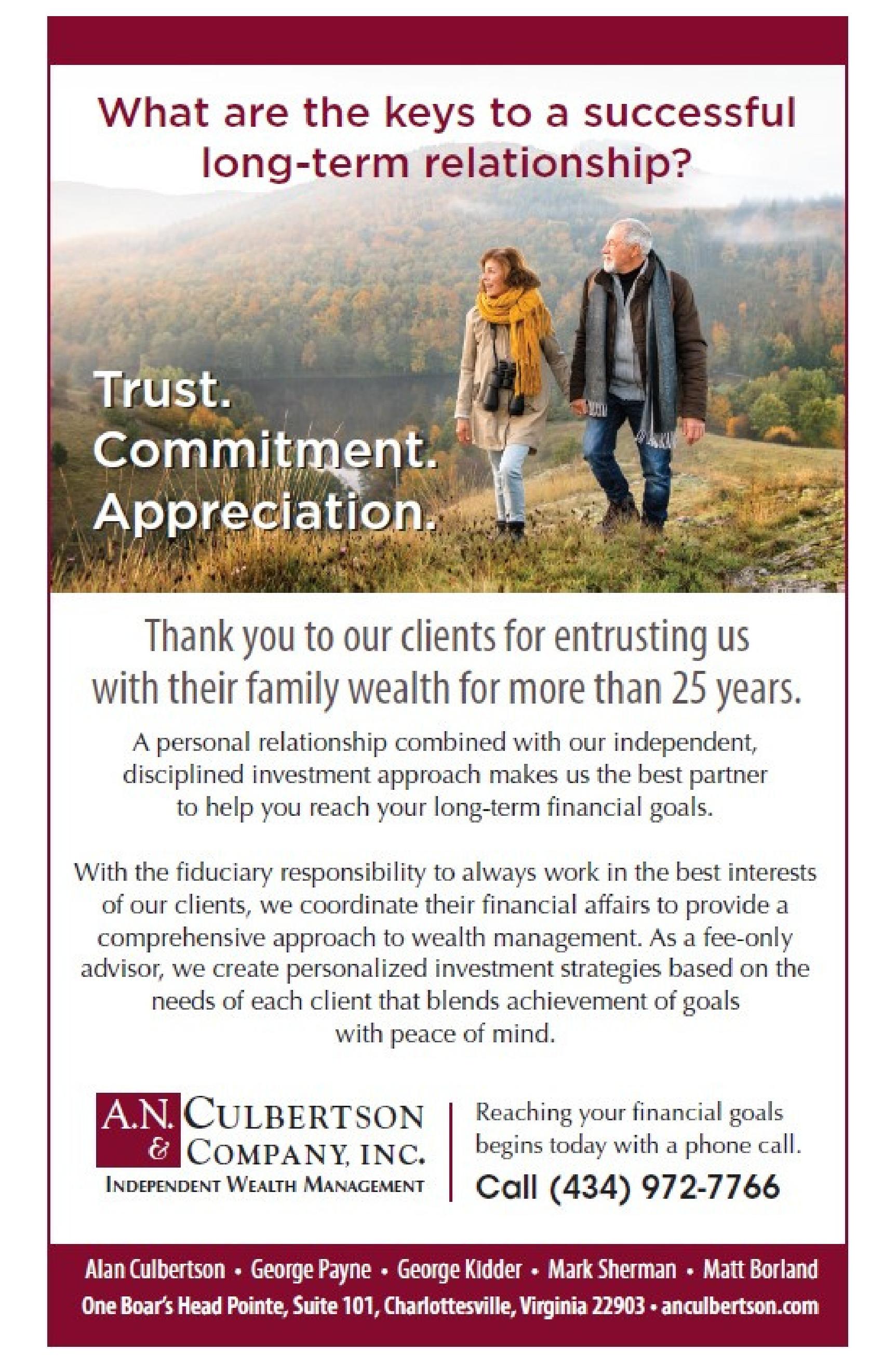
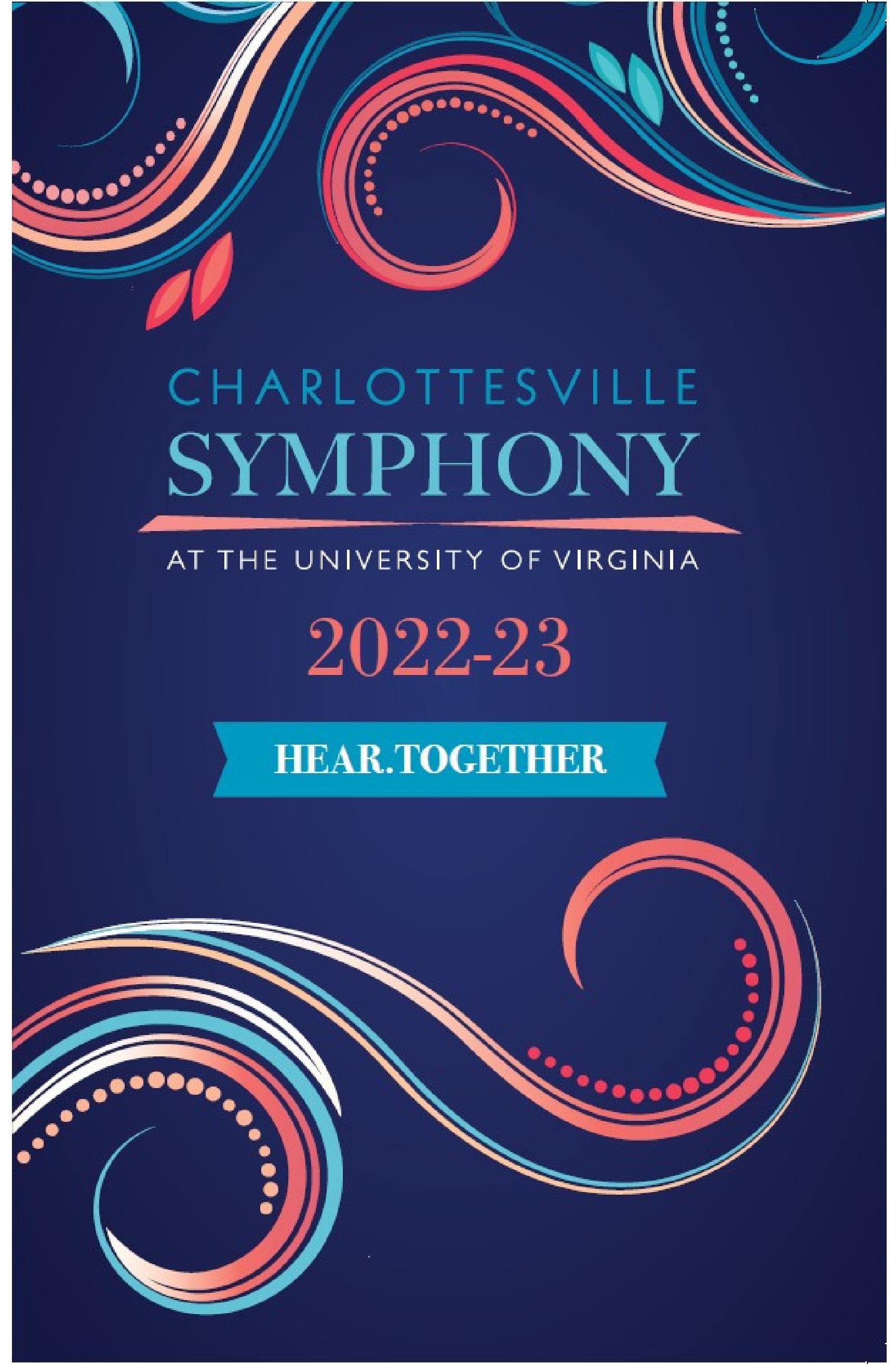



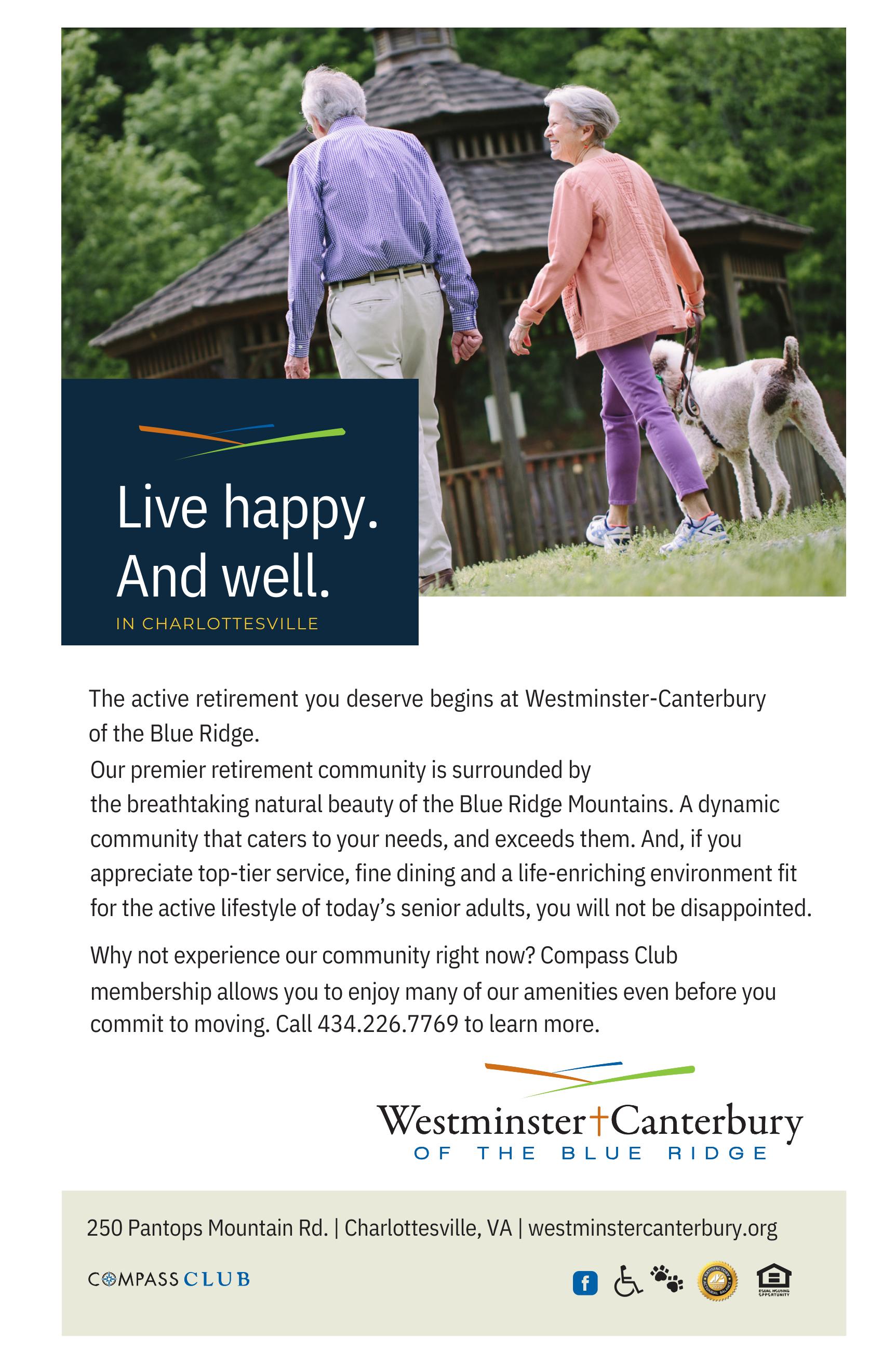


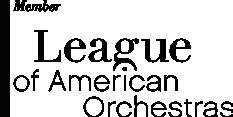

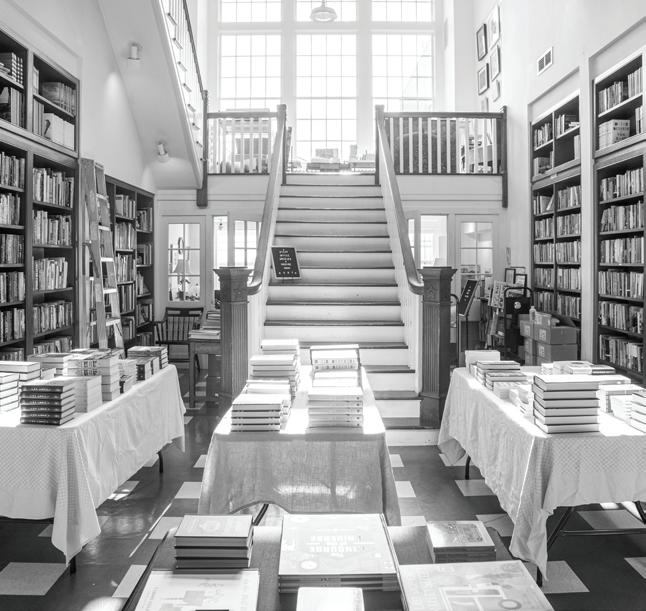

























































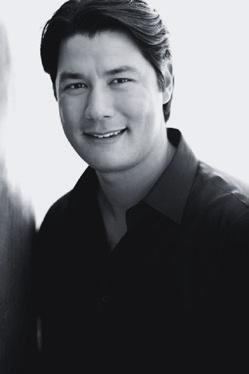

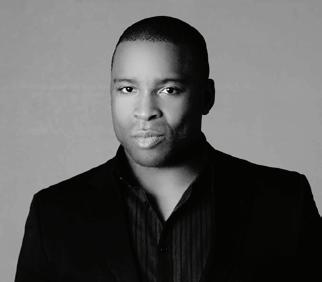









 by Laurie Shulman ©2022
by Laurie Shulman ©2022






















